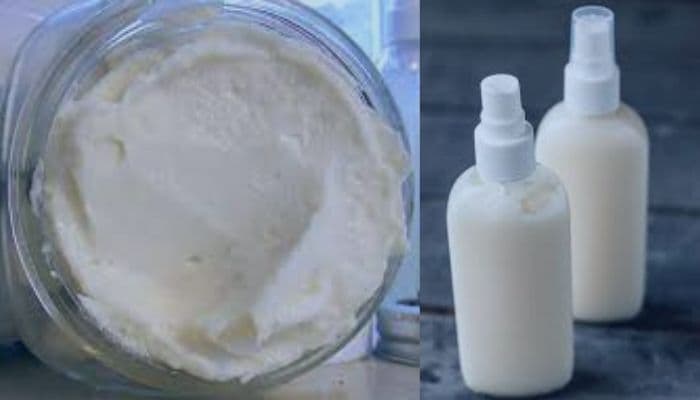
I have two answers to this question. The first is- the best home hair conditioner recipe combines one ripe avocado, two tablespoons of olive oil and one tablespoon of honey. Then blend the ingredients until smooth. Now apply to hair and rinse after 20-30 minutes.
And second is- to make a homemade hair conditioner, mix 1 ripe banana, 2 tablespoons of honey and a few drops of almond oil. Now simply apply thoroughly to your hair and leave it for 20-30 minutes, then rinse well. This natural blend nourishes and softens our locks effectively.
Crafting our own hair conditioner at home can be a delightful and nutritious treat for our hair. With natural ingredients from our kitchen, we can create a mixture that rivals the most sought-after commercial brands without the harsh chemicals and hefty price tags. Yes, you heard true fact.
A homemade hair conditioner is not only cost-effective, but it also offers a custom blend of nutrients that can be tailored to our specific hair needs. This DIY approach to hair care embraces the simplicity of using readily available, wholesome ingredients, ensuring that you know exactly what goes onto our locks. Embrace the power of nature with a homemade conditioner that’s uncomplicated to make and astounding in its ability to transform our hair’s health and shine.
Basic concept of homemade hair conditioner
Homemade hair conditioners offer a plethora of benefits for those seeking a more natural haircare routine. By leveraging natural ingredients, these conditioners can be gentler on the hair and scalp versus their commercial counterparts, often loaded with chemicals that may cause harm over time. The use of items like coconut oil, honey, and avocado in homemade recipes not only nourishes the hair but also avoids potential irritants and allergens frequently found in synthesized products.
Many individuals choose to create their own conditioners to ensure full control over what they apply to their bodies. Do you know that? Basically, the process empowers users to customize treatments specifically tailored to their hair type, whether it is dry, oily or somewhere in between. Making conditioners at home can also be cost-effective, as many recipes call for common kitchen ingredients that are often less expensive than salon-grade products.
Choosing Ingredients For Your Hair Type
First of all, we have to identify our hair types. Identifying your hair type is crucial before choosing ingredients for a home hair conditioner. It’s true that oily hair benefits from lightweight, non-greasy ingredients such as aloe vera or lemon juice. Dry hair requires more nourishing elements like honey or olive oil to provide moisture and improve texture. Those with normal hair can enjoy the best of both worlds, focusing on maintaining balance with ingredients such as jojoba oil.
Each natural ingredient has their own unique benefits: Aloe vera hydrates without heaviness, ideal for keeping oily hair fresh. Honey, an emollient, seals moisture in dry hair strands, while olive oil deeply conditions, combatting dryness. Jojoba oil closely mirrors the scalp’s natural oils, ensuring normal hair remains healthy and vibrant.
To customize the recipe for specific hair concerns, incorporate targeted ingredients. Protein-rich ingredients like yogurt or eggs fortify strands, aiding in repair, whereas banana and avocado can enhance softness and shine, addressing texture issues and brittleness.
Best Application Techniques For Maximum Benefits
Optimal conditioner application can significantly enhance the benefits of our homemade hair treatments. But how can we use it in a proper way? Ok, let’s know-
- Start with clean, damp hair to allow for better absorption of the nutrients.
- Now gently massage the conditioner into your scalp and work through the hair, paying special attention to the ends where damage is most likely. For even distribution, use a wide-toothed comb.
- Consistent use is the key, with most hair types benefitting from conditioning 2 to 3 times per week. This frequency keeps hair hydrated without overburdening it with excess products. Those with finer hair may opt for lighter applications to prevent weighing the hair down.
- Applying conditioners on varied hair lengths can have its unique challenges. Short hair requires minimal product and less time, while long hair may need sectional application to ensure every strand is coated. Medium lengths enjoy the versatility of both methods, neither requiring too much product nor time.
By following my mentioned steps, you can use it in a proper way.
What Is A Good Home Remedy To Condition our Hair?
A good home remedy for conditioning hair is using a mixture of one ripe mashed avocado and two tablespoons of olive oil. Just apply it to your hair, leave for 20 minutes, then rinse thoroughly.
How Do You Make Your Own Hair Condition?
To create our hair conditioner, we have to mix one ripe avocado, a tablespoon of olive oil, and a quarter cup of milk. Now we need to blend it until smooth, apply to hair for 15 minutes, then rinse. Customize with essential oils for added fragrance.
What Is The Best Home Conditioner For Dry Hair?
The best home conditioner for dry hair is Moroccanoil Intense Hydrating Mask. It deeply moisturizes, improving texture and shine.
My Last Words
Embracing natural hair care is a win for both your locks and the environment. With the homemade conditioner recipes shared, silky, nourished hair is a simple mix away. Remember, these eco-friendly blends not only foster healthier hair but also promote sustainable beauty practices.

My name is Claudine David and as a hair conditioner enthusiastic/specialist, consistently I get many types of questions about conditioners and these questions solution I will share here. Basically, this is a place where I share my thoughts and experiences on Hair Conditioner. This website (https://conditionerhacks.com) is an outlet of my deep passion for Conditioner.
Specifically I specialize in hair conditioners. I have been working in the field of hair care for over 6 years. Basically my passion for hair care started when I was a young girl. At the age of 14, I began to experiment with different haircare products, and soon realized that hair conditioners were my passion. I’m always looking for the best and most innovative products. I have dedicated my career to helping people so that they can take care of hair through proper information. Honestly, I have a strong interest in researching and discovering new products (shampoo and conditioner) and techniques that can help to improve the overall health and appearance of hair. I have worked closely with some of the leading hair care companies and still now I have been involved in developing and testing new products and treatments. I have also worked with a number of salons and retail stores. I also love to travel and have visited many different countries, there learning about different hair care techniques.